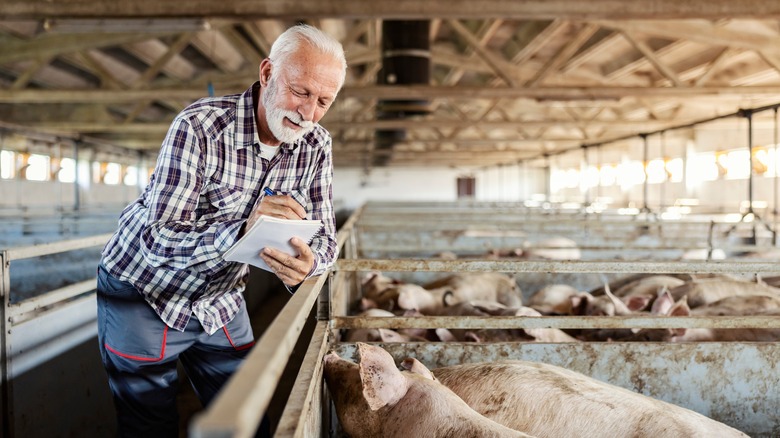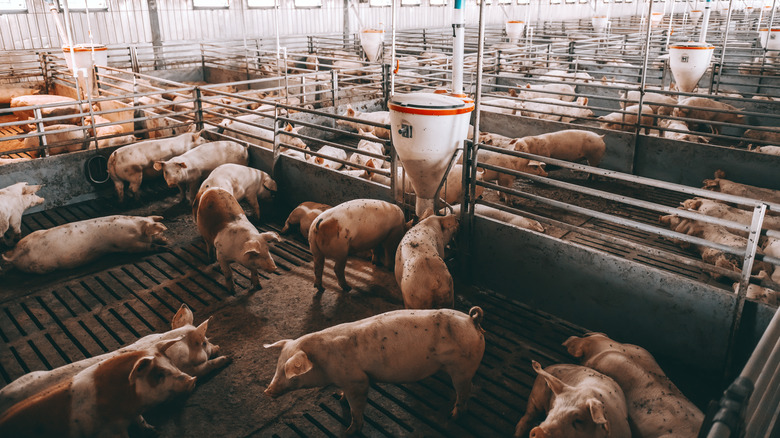New Report Shows Pig Farming's Impact On The US Economy
Humans and pigs have been in structured cohabitation for a long time. According to Nature, domesticated pigs have been around for about 10,000 years. In that time, empires and civilizations have fallen, but the pork industry has persevered. From barbecue and luaus, to New Year's traditions and beyond, the pork industry is a deeply embedded piece of global food culture.
Of course, there are drawbacks to the pork industry as well. Livestrong notes that consuming pork can raise bad cholesterol and increase the risk of heart disease. People for the Ethical Treatment of Animals (PETA) also notes that pigs are highly intelligent creatures that often live in harsh environments when they are raised for the mass production of pork products.
Regardless, the industry is still responsible for massive economic impacts. The National Pork Producer's Council (NPPC) recently released a report that shows just how important the industry's economic impact is to the United States. Its report stated that more than 66,000 pork producers are responsible for running the $28 billion industry.
Growing economic impact driven by consolidation and exports
According to the NPPC report, there were more than 66,000 pork producers in operation in 2021, but the industry supported a grand total of 610,000 jobs across the nation. The organization states that the industry also added more than $57 billion in value to the national Gross Domestic Product (GDP), and generated more than $35 billion in personal revenue for those involved in the industry.
The report also shows that while total hog inventory has gone up in the last 20 years, the number of farms in operation has consolidated. In 1997, there were 124,889 pork farming operations in the United States. By 2017 that number would drop to 66,439 while doubling the average number of hogs per farm to 1,089. A huge number of the United States hog inventory is also sold to foreign countries with around 25% of the total production was exported in 2021.
The United States Department of Agriculture (USDA) states that these shifts in the American pig farming economy are driven by huge structural changes. It also reports that gains in efficiency and lower overall production costs have allowed for the market to change and grow so dramatically.

